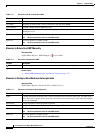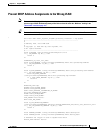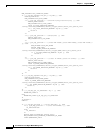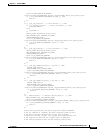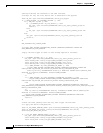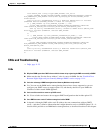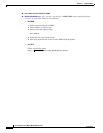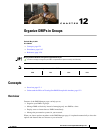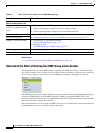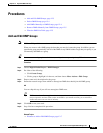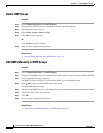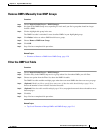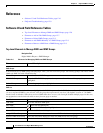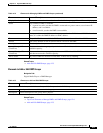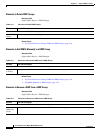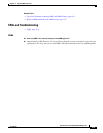
12-2
User Guide for Cisco Digital Media Manager 5.2.x
OL-15762-03
Chapter 12 Organize DMPs in Groups
Concepts
Related Topics
• Top-Level Elements to Manage DMPs and DMP Groups, page 12-6
Understand the Effect of Nesting One DMP Group Inside Another
We recommend that you create DMP groups to organize your DMPs according to characteristics that
they have in common, such as where or how you will use them, according to whatever logic works best
for you. For example, the logical basis for your DMP groups might be geographic or corporate.
One DMP group can contain another. Each choice that you make for centralized management propagates
from parent (DMP group), to child (DMP subgroup or DMP), to grandchild (DMP). There is no
maximum number of levels that you can add to the hierarchy, but a simpler organization is more scalable
than an unreasonably complex one would be.
We recommend that you do not assign any DMP to the root level in the hierarchy, due to the complexity
of management, but we do not prevent you from doing this.
Table 12-1 Tasks That You Can Perform on the DMP Manager Page
Task To Learn More
DMP Group Management Tasks
View the group hierarchy and
collapse or expand any of its
levels
• Click a group in the DMP Groups tree to list its member DMPs in the DMP table.
• Click a closed group to expand its level in the object selector.
• Click an opened group to collapse its level in the object selector.
Add a new group
• Add and Edit DMP Groups, page 12-3.
• Understand the Effect of Nesting One DMP Group Inside Another, page 12-2.
Edit an existing group
Populate a group with DMPs
• Automatically, in a production network:
Add and Edit DMP Groups, page 12-3.
• Manually, in a lab:
Add DMPs Manually to DMP Groups, page 12-4.
Delete a group Delete DMP Groups, page 12-4.
Remove DMPs from groups Remove DMPs Manually from DMP Groups, page 12-5.



